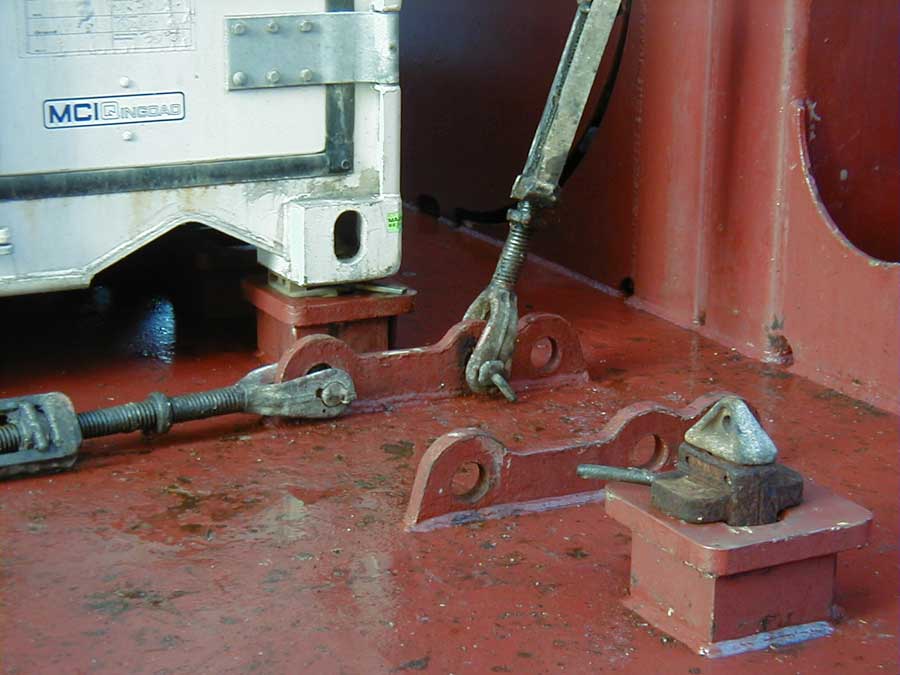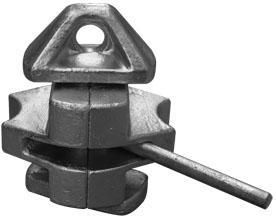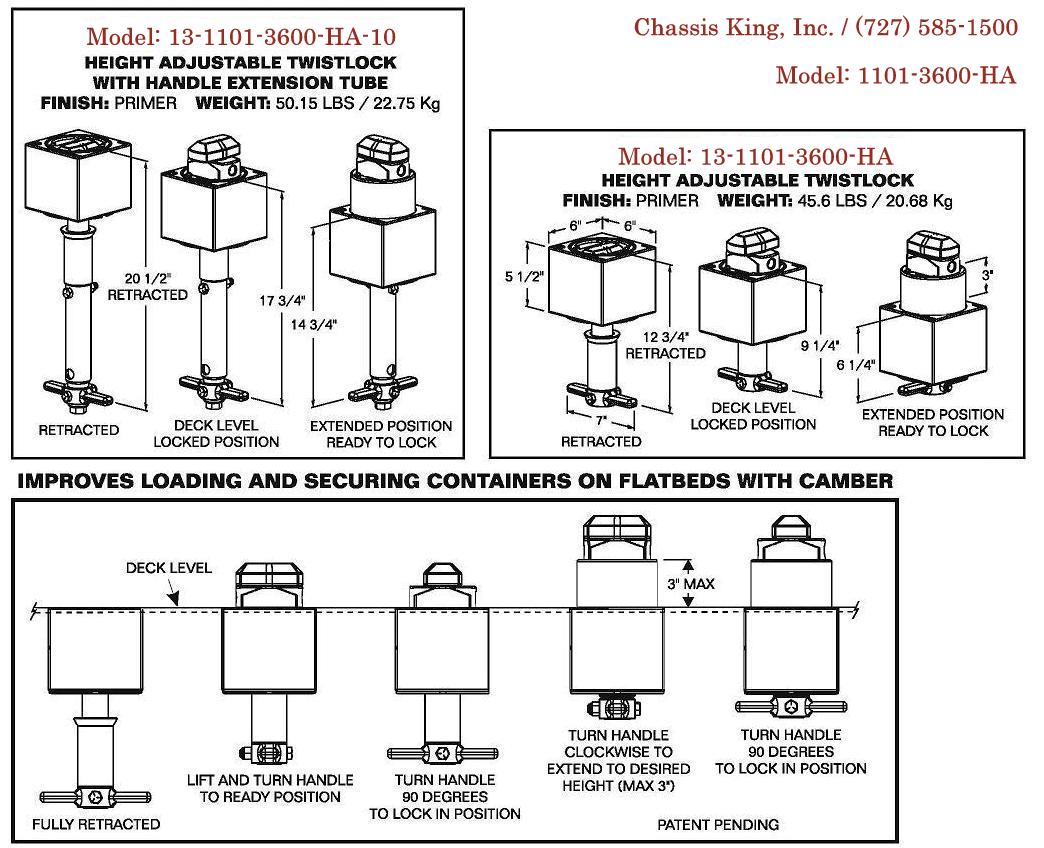Twistlock
Twist locks (twist engl. For " twist " lock engl. For "Castle " ) are locks, swap bodies or ISO containers with each other and / or connect to the carrier vehicle. The twist locks into the standard corner fittings ( corner castings ) of containers are used or put the container on the latches firmly located on the vehicle. Then, a part of the twistlock is turned by 90 °, thereby preparing a positive connection.
The closure direction of the twist locks is different. In Europe left -closing twist locks, distributed in the U.S. legally closing twist locks.
Use
For land vehicles, there can be lowered and not lowered (lift ) locks that are often firmly attached to the vehicle. The container lock ( twist lock ) on a semi-trailer truck is accomplished with hand wheel and fuse.
Attach suitable for container
Look in the locked state
Shipping
In shipping, various elements to secure containers on deck or in the hold are used. Twistlocks differ according to their location and the type of ship and are then referred to correspondingly different. On container ships, for example, be used to secure the container to cover the normal ( ordinary ) twist locks. They have at each end a conical shape and together with the shaft, the vertical axis to be rotated, which is placed in the closed (locked ) position, after the rotation by 90 °. On the hatch covers so-called twist lock Foundations or Pockets are attached. In this recess one side of the twist locks is inserted. From above, a container is set to the twistlock whose upper end is now stuck in a corner casting. Now the vertical axis of the twist locks is twisted. Due to the shape of the twist-lock member of the container in this area is now firmly connected to the hatch cover. Each container is secured with four twist locks.
For other ship types ( eg multi - purpose vessels ) that are not only designed for the container trade, there may be other types of twist locks, because the twistlock Foundations be disturbing for the carriage of other cargoes on deck or on the hatch cover can. Here one uses so-called bottom- or sliding twistlock. These are pushed into so-called dovetail Foundations ( dovetail foundations ). The system is similar to a foot which is inserted into a shoe. This looks twistlock on the upper half as the standard twist lock, but only on its lower side a plate which is inserted into the base of the deck or hatch cover.
Automatic twist locks
Originally, the twist locks were inserted from above into the container or Deck fittings, then placed the container and the locking mechanism is actuated mechanically. For reasons of accident protection, the development of semi-automatic to fully automatic twist locks went. These are in the lower corner fittings ( corner castings ) of the hooked into the container bridge hanging container. Lock and unlock ( corresponding break-out force of the bridge with vibrations of the content) automatically when they snap into their corresponding fittings already standing container.
Additional material to container security
- Connecting element
- Container traffic










